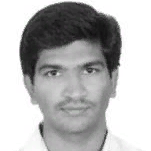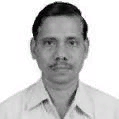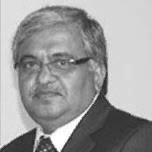International Journal of Image, Graphics and Signal Processing (IJIGSP)
IJIGSP Vol. 7, No. 10, 8 Sep. 2015
Cover page and Table of Contents: PDF (size: 913KB)
Spatiotemporal Data Fusion using Dictionary Learning and Temporal Edge Primitives
Full Text (PDF, 913KB), PP.47-59
Views: 0 Downloads: 0
Author(s)
Index Terms
Spatiotemporal data fusion, AWiFS, LISS III sensor data, Dictionary learning, Sparse coding
Abstract
Technological limitations restrict to acquire an image at high spatial and high temporal resolutions with space borne global sensors. In this paper, we propose a novel technique to create such images at ground-based data processing system. The Resourcesat-2 is one of the Indian Space Research Organization (ISRO) global missions and it carries Linear Imaging and Self-Scanning Sensors (LISS III and LISS IV) and an Advanced Wide-Field Sensor (AWiFS). The spatial resolution of LISS III is 23.5 m and that of AWiFS is 56 m. The temporal resolution of LISS III is 24 days and that of AWiFS is 5 days. Objective of the paper is to create a synthetic LISS III image at 23.5 m spatial and 5-day temporal resolutions. A synthetic LISS III image at time tk is created from an AWiFS image at time tk and a single AWiFS–LISS III image pair at time t0 which is acquired before or after the prediction time tk , here t0≠tk. The proposed method involves three phases. The first is super resolution phase. In this phase, two transition images are obtained for the time t0 and tk by improving AWiFS spatial resolution. The second is high pass modulation phase. In this phase, the high frequency details which are obtained in the difference of LISS III image and the transition image of time t0 are proportionally injected into the transition image at time tk. In composition of multi-temporal images of different spatial resolutions, spurious spatial discontinuities are inevitable. In the third phase, these spurious discontinuities are identified and smoothed with the spatial-profile-averaging method. The proposed method achieves better prediction accuracy when compared to the state-of-the art techniques.
Cite This Paper
J. Malleswara Rao, C. V. Rao, A. Senthil Kumar, B. Gopala Krishna, V. K. Dadhwal,"Spatiotemporal Data Fusion using Dictionary Learning and Temporal Edge Primitives", IJIGSP, vol.7, no.10, pp.47-59, 2015. DOI: 10.5815/ijigsp.2015.10.06
Reference
[1]Aharon, M., Elad, M., & Bruckstein, A. (2006). svd: An algorithm for designing overcomplete dictionaries for sparse representation. Signal Processing, IEEE Transactions on, 54(11), 4311-4322.
[2]Baker.S and T. Kanade, 2000 ,"Limits on super-resolution and how to break them," in Proc. IEEE Conf. Comput. Vision Pattern Recognit., vol. 2, pp. 372–379.
[3]Chander, G., M.J. Coan, andP.L. Scaramuzza.2008. "Evaluation and omparison of the IRS-P6 and the Landsat sensors." Geoscience and Remote Sensing, IEEE Transactions on, 46:209-221.c
[4]Chang H., D.-Y. Yeung, and Y. Xiong, "Super-resolution through neighbor embedding," in Proc. IEEE Conf. CVPR, 2004, vol. 1, pp. I-275–I-282.
[5]Coops.N.C, M.Johnson,M.A. Wulder, J.C.White, 2006. "Assessment of QuickBird high spatial resolution imagery to detect red attack damage due to mountain pine beetle infestation." Remote Sensing of Environment, vol.103, no.1, pp.67-80,July.2006.
[6]Davis, G., Mallat, S., & Avellaneda, M. (1997). Adaptive greedy approximations. Constructive approximation, 13(1), 57-98.
[7]Elad.M and D. Datsenko, 2009 "Example-based regularization deployed to super-resolution reconstruction of a single image," Computer J., vol. 52, no. 1, pp. 15–30, Jan..
[8]Elad, M. (2010). Sparse and redundant representations: from theory to applications in signal and image processing. Springer.
[9]Freeman, W. T., Jones, T. R., & Pasztor, E. C. (2002). Example-based super-resolution. Computer Graphics and Applications, IEEE, 22(2), 56-65.
[10]Gitelson, A. A. (2004). Wide dynamic range vegetation index for remote quantification of biophysical characteristics of vegetation. Journal of plant physiology, 161(2), 165-173.
[11]Holben B.N., "Characteristics of maximum-value composite images from temporal AVHRR data." International Journal of Remote Sensing, vol.7, no.11, pp.1417-1434, 1986.
[12]Huang.B. and H.Song. "Spatiotemporal reflectance fusion via sparse representation." IEEE Transactions on Geoscience and Remote Sensing, vol.50, no.10, pp.3707-3716, Oct.2012.
[13]Huete.A, C. Justice, W.Van Leeuwen,. "MODIS vegetation index (MOD13),"Algorithm theoretical basis document, 1999.
[14]ISRO, Annual Report 2012.www.isro.org/pdf/AnnuaReport2012.pdf (Accessed on 18-03-2014).
[15]Jiji, C. V., Joshi, M. V., & Chaudhuri, S. (2004). Single‐frame image super‐resolution using learned wavelet coefficients. International journal of Imaging systems and Technology, 14(3), 105-112.
[16]Ji T.L., M.K. Sundareshan, H. Roehrig, 1994. "Adaptive image contrast enhancement based on human visual properties." Medical Imaging, IEEE Transactions on, vol.13, no.4, pp. 573-586, April.
[17]Justice C.O., J.R.G.Townshend, B.N.Holben, E.C.Tucker, "Analysis of the phenology of global vegetation using meteorological satellite data." International Journal of Remote Sensing, vol.6, no.8, 1271-1318, 1985.
[18]Mitchell.H.B., "Data Fusion: Concepts and Ideas." Springer, 2012.
[19]Ranganath.R, R.Navalgund, R.PSingh, "The evolution of the earth observation system in India." Journal of the Indian Institute of Science, vol.90, no.4, pp. 471-488, April.2012.
[20]Rubinstein, R., Bruckstein, A. M., & Elad, M. (2010). Dictionaries for sparse representation modeling. Proceedings of the IEEE, 98(6), 1045-1057.
[21]Song.H and B.Huan,"Spatiotemporal satellite image fusion through one-pair image learning." IEEE Transactions on Geoscience and Remote Sensing, vol. 51, no.4, pp.1883-1896, April.2013.
[22]Starck, J. L., Murtagh, F., & Fadili, J. M. (2010). Sparse image and signal processing: wavelets, curvelets, morphological diversity, pp.2-3,Cambridge University Press.
[23]Yang, J., Wright, J., Huang, T. S., & Ma, Y. (2010). Image super-resolution via sparse representation. Image Processing, IEEE Transactions on, 19(11), 2861-2873.
[24]Walker, J.J., K. M.De Beurs, R. H.Wynne, F.Gao. 2012. "Evaluation of Landsat and MODIS data fusion products for analysis of dryland forest phenology." Remote Sensing of Environment, 117:381-393.
[25]Wu, W., Z. Liu, X. He, W. Gueaieb. 2011. "Single-image super-resolution based on Markov random field and contourlet transform." Journal of Electronic Imaging, 20(2): 023005-023005.
[26]Zeyde, R., M. Elad, M. Protter. 2012. "On single image scale-up using sparse-representations." In Curves and Surfaces, Springer Berlin Heidelberg.




